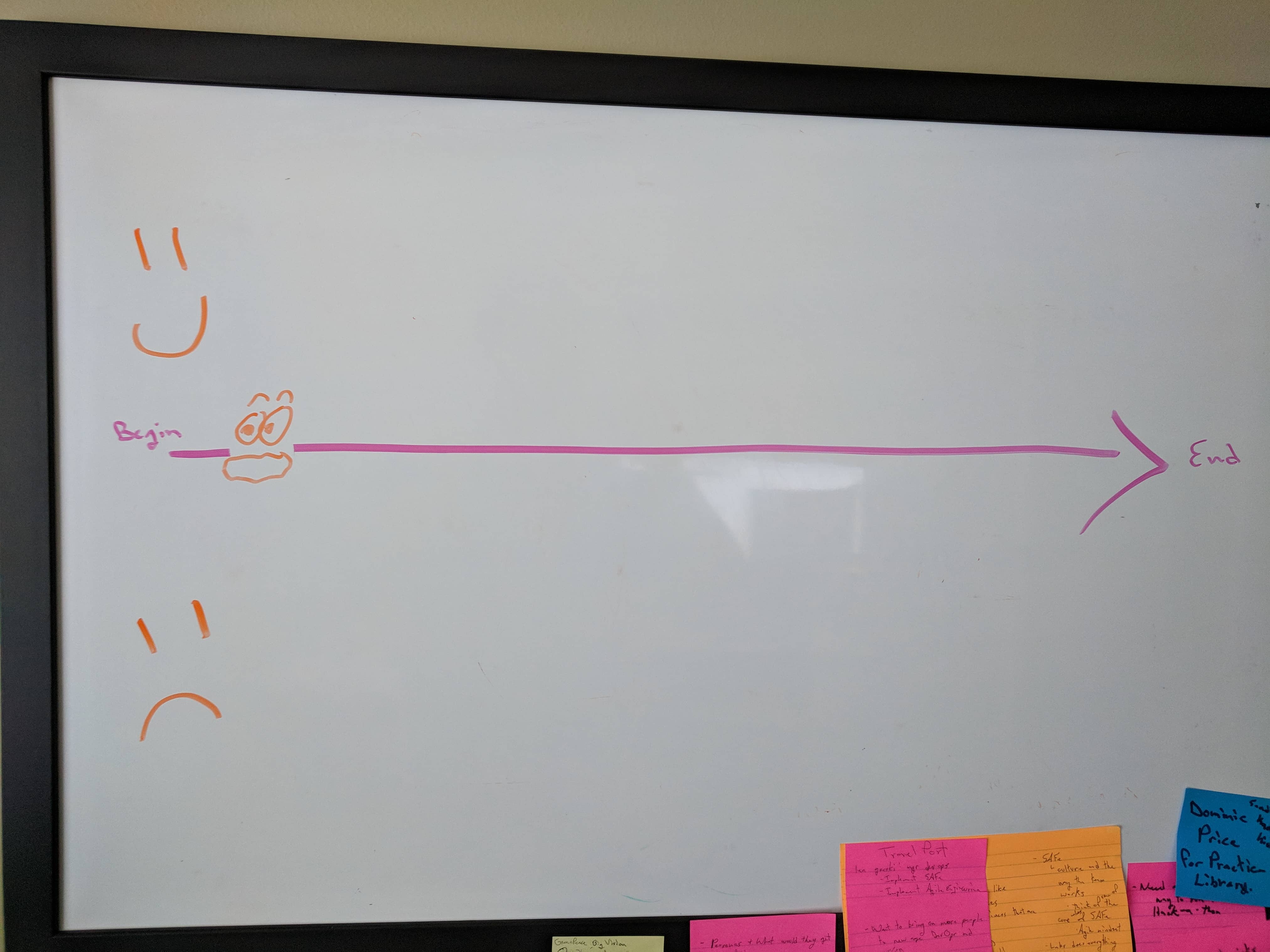Realtime Retrospective
Getting feedback faster and improving the overall experience of your event.
目录
What is it?
The Realtime Retrospective technique was created by Emily Webber1. This is a great way to capture feedback from a large number of participants in realtime over an extended period of time. By the middle of your event you should already have:
- some feedback in a timeline-like fashion that includes both positive and negative things
- a capture of the mood and reaction of people over the course of time in a realtime manner
- lots of sticky notes on a wall
How does it fit?
- Typically done in the Culture and Collaboration area of the Foundation of the Open Practice Library.
Why use Realtime Retrospective?
- Let’s face it, nobody likes filling out surveys, especially if it’s more than three questions. Why not have the participants write unfiltered, uncensored, and quick feedback at the time they think of it? Realtime Retrospectives provide a low bar of entry and is voluntary and easy to participate anonymously.
- For long running days or weeks with multiple sessions or activities, you can visibly see people’s moods or grasp of the information in realtime.
- When running similar sessions in quick succession, you may need to improve quickly and sometimes adjust on the fly.
Who do you need?
- A Facilitator (person to setup/cleanup).
- Participants (anybody that was there during the timeframe).
Suggested Time
- ~10 minutes setting up and cleaning up.
- Wall is kept up over the course of 1-5 days for active participation.
Difficulty
- Facilitator: Easy
- Participants: Easy
Recipe
Facilitation Materials Needed
- Drawing paper roll. Sticky notes tend to fall off walls otherwise.
- 8×6 sticky notes2.
- At least 3 different colors of small 3×3 square sticky notes3.
- Several markers.
- Some painter’s tape.
Preparations
- Find a wall or surface that is long enough to handle the amount of feedback you are expecting.
- Make a long line to represent time.
- Draw a Happy Face above the line, a Sad Face below the line, and a Surprised Face along the line (this represents the type of feedback that you wish to receive – Positive, Negative, Surprised).

Realtime Retrospective Setup
Step 1
Explain to your participants your goal of using this practice and how to use your prepped area. Key things to share:
- Where to find materials for them to contribute.
- How the timelapse begins at the left and continues until the timeframe you designate as the end.
- Any and all feedback is welcome, 1 post-it per feedback item.
Step 2
Cycle back constantly to review your feedback and make appropriate improvements based on them.
Related Practices
- Timeline Retrospectives by Patrick Kua4 uses a similar approach to gathering feedback in a sequential order
- Linda Rising has a concept of the Continuous Retrospective5 that uses the timeline aspect of the Timeline Retrospective and to reflect on it everyday as a team.
External References
- Realtime Retrospectives by Emily Webber.
- 8×6 sticky notes example.
- 3×3 sticky notes example.
- Timeline Retrospectives by Patrick Kua.
- Continuous Retrospective by Linda Rising.
Another interesting reference: the Double Diamond design model.
